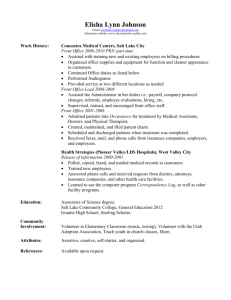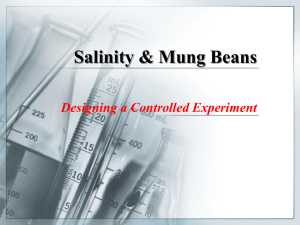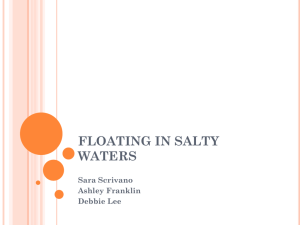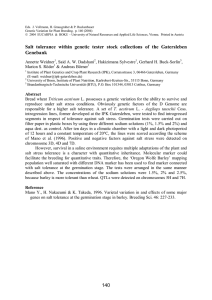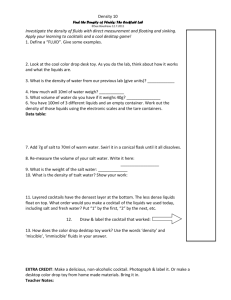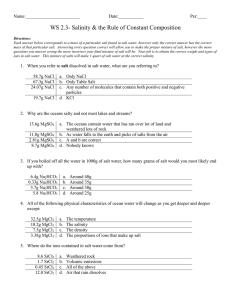Salinization Lab
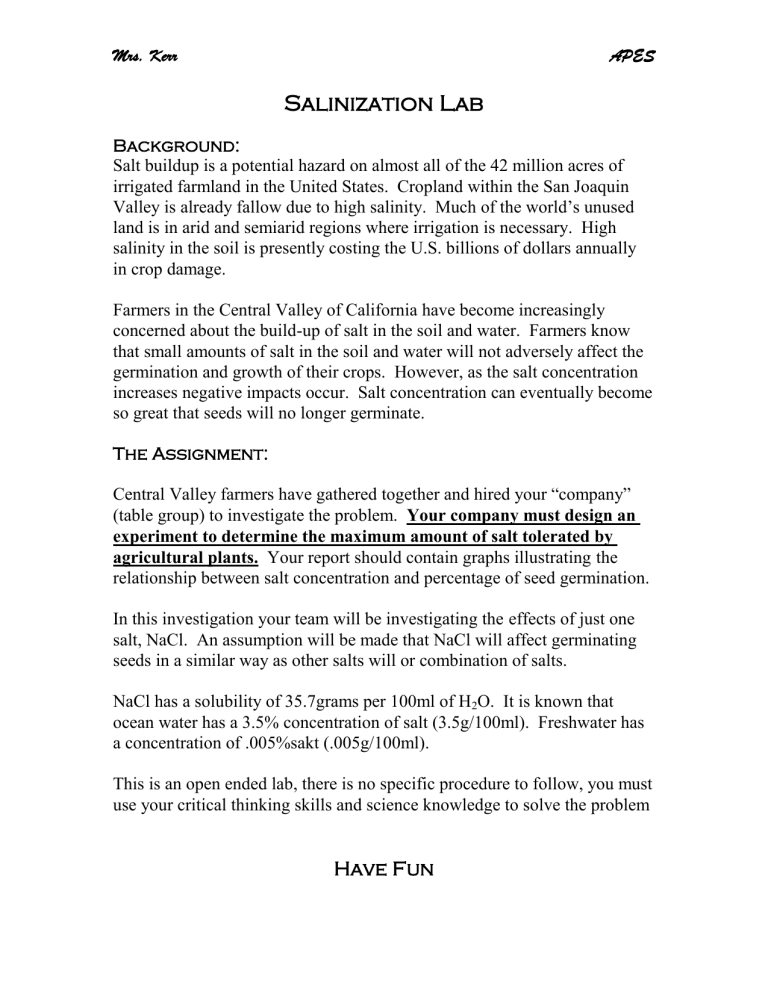
Mrs. Kerr APES
Salinization Lab
Background:
Salt buildup is a potential hazard on almost all of the 42 million acres of irrigated farmland in the United States. Cropland within the San Joaquin
Valley is already fallow due to high salinity. Much of the world’s unused land is in arid and semiarid regions where irrigation is necessary. High salinity in the soil is presently costing the U.S. billions of dollars annually in crop damage.
Farmers in the Central Valley of California have become increasingly concerned about the build-up of salt in the soil and water. Farmers know that small amounts of salt in the soil and water will not adversely affect the germination and growth of their crops. However, as the salt concentration increases negative impacts occur. Salt concentration can eventually become so great that seeds will no longer germinate.
The Assignment:
Central Valley farmers have gathered together and hired your “company”
(table group) to investigate the problem. Your company must design an experiment to determine the maximum amount of salt tolerated by agricultural plants.
Your report should contain graphs illustrating the relationship between salt concentration and percentage of seed germination.
In this investigation your team will be investigating the effects of just one salt, NaCl. An assumption will be made that NaCl will affect germinating seeds in a similar way as other salts will or combination of salts.
NaCl has a solubility of 35.7grams per 100ml of H
2
O. It is known that ocean water has a 3.5% concentration of salt (3.5g/100ml). Freshwater has a concentration of .005%sakt (.005g/100ml).
This is an open ended lab, there is no specific procedure to follow, you must use your critical thinking skills and science knowledge to solve the problem


